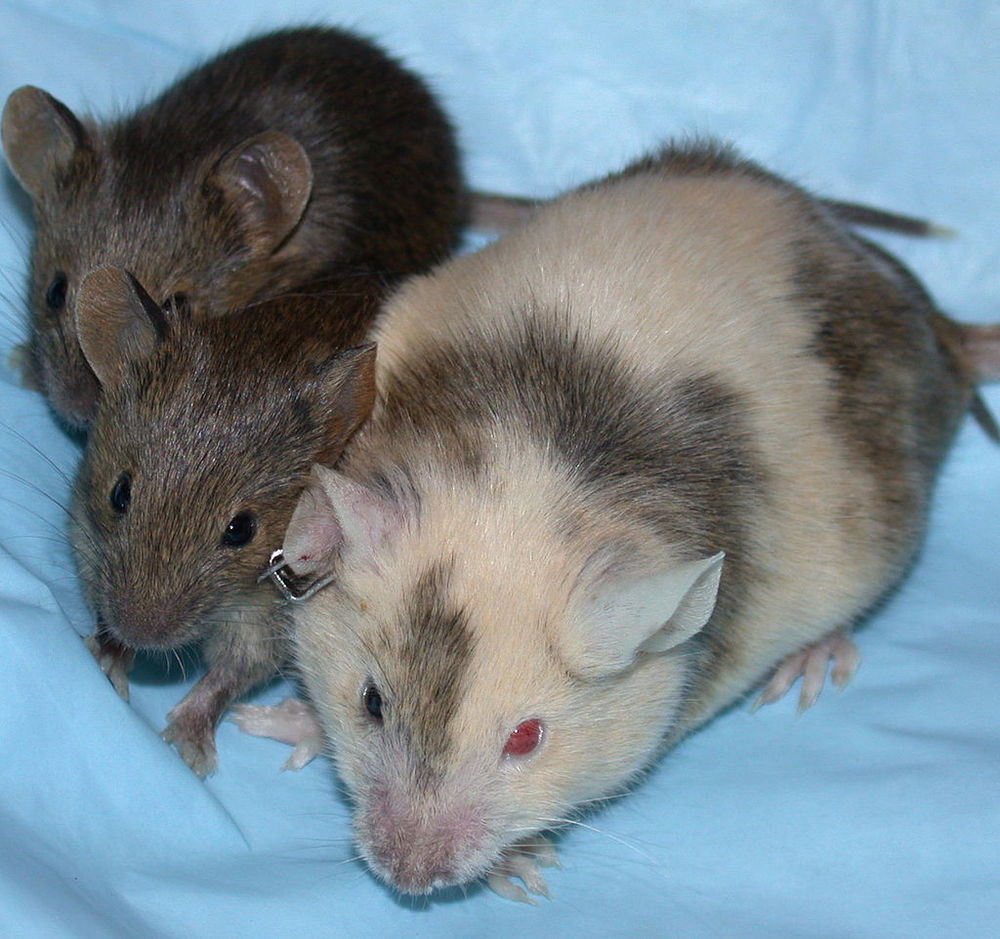Amazing Genetic Tales: Chimeras
/ A chimera mouse with two of her non-chimeric offpsringA story hit the news last week that was meant to be an interesting human vignette, but the forensic aspects of it immediately jumped out at me. Ah, crime writers. Sometimes we see the world through a special lens!
A chimera mouse with two of her non-chimeric offpsringA story hit the news last week that was meant to be an interesting human vignette, but the forensic aspects of it immediately jumped out at me. Ah, crime writers. Sometimes we see the world through a special lens!
The story begins with an American couple who conceived a child through in vitro fertilization. The mother carried to term and gave birth to a healthy baby boy. Unexpectedly, however, the boy’s blood type didn’t match either parent, and they became concerned a mix-up had occurred at the fertility clinic. The clinic maintained that on the day of the donation, the father was the only white man to donate sperm; since the child was clearly white, no mix-up had occurred. Still the couple wanted full tests run, so the father contributed a saliva sample and a paternity test was run which concluded that the boy was not his son. Needless to say, the parents were devastated, but they requested a more detailed test through the commercial genetic ancestry company 23andMe.
No one anticipated the results of that test. It was revealed that the man was not the boy’s father, but was instead his uncle. As we’ve discussed in the past, standard identification by DNA is established using 15 markers, but 23andMe uses a genotyping method (near and dear to my heart as we’ve just finished a 5-year Dengue study in the lab based on this technique) called GWAS—Genome-Wide-Association Study—to look at hundreds of thousands of genes for the purpose of building a detailed ancestry map. Because of this extremely thorough analysis, they were able to determine that the boy was the nephew of the man thought to be his father.
However, the man didn’t have a brother. So there was only one conclusion to be drawn from the analysis. Keep in mind the statistic that 1 in 8 single births start as multiple pregnancies, but one of the children is lost very early and, rather than being miscarried, is simply reabsorbed in the womb. Sometimes these cells are then incorporated into the surviving child, making that child a chimera—an organism made up of cells originating from genetically distinct individuals. The man must have been the only survivor of what were originally two fraternal twins, as absorbing an identical twin would have been indistinct from his own natural genotype. As a result, the sperm he produced carried his unborn brother’s genetic signature, but his saliva carried his own. It’s the first known case in the world of a chimera fooling a paternity test.
As a biologist currently heavily involved in complex genetics and genotyping, I was instantly interested in the details of this case. But as a crime writer, I immediately considered the forensic implications of this gentleman. Not that I’m suggesting he’s going to take this information and suddenly adopt of life of crime, but any man with this type of chimerism could be a rapist that would be beyond normal law enforcement’s ability to apprehend since typical DNA sampling techniques would not capture his true genetic state. Luckily, this is a very rare genetic occurrence, and though TV crime shows like CSI might use this scenario as a plot device, the chances of it happening in real life are exceedingly small.
Photo credit: Wikimedia Commons



 87.5%
87.5%